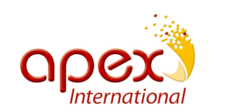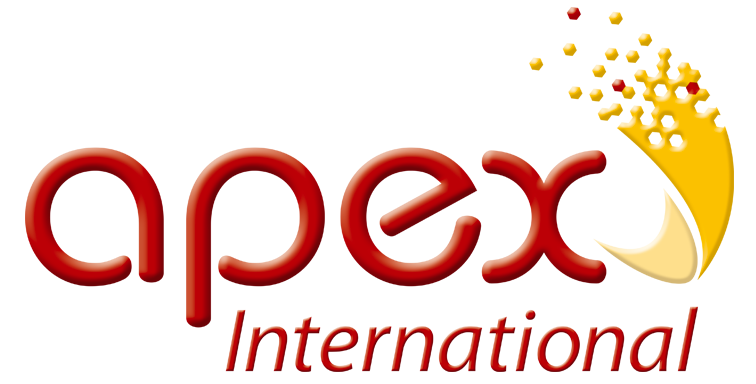
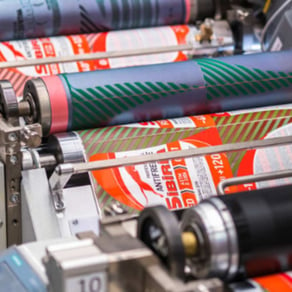 Expanded color gamut (ECG) printing has been a possibility within the Flexographic industry for over 20 years. However, many converters have yet to achieve the uptime, run consistency and savings associated with this process innovation. By now, most have attempted the ECG printing process at least once, only to find they were unable to control the precise ink laydown required for accurate Pantone color builds. What began as an initiative to cut costs and increase production, ended up with the complete opposite outcome: more waste and downtime. Or maybe you are one of the few companies that were initially successful in expanded gamut. The only problem was, at the time, your end customers and Brands were rejecting the ECG color build process and insisting on spot colors. Either way, the conclusion remains the same – many converters today are still not taking full advantage of the production savings and efficiency of successful ECG printing.
Expanded color gamut (ECG) printing has been a possibility within the Flexographic industry for over 20 years. However, many converters have yet to achieve the uptime, run consistency and savings associated with this process innovation. By now, most have attempted the ECG printing process at least once, only to find they were unable to control the precise ink laydown required for accurate Pantone color builds. What began as an initiative to cut costs and increase production, ended up with the complete opposite outcome: more waste and downtime. Or maybe you are one of the few companies that were initially successful in expanded gamut. The only problem was, at the time, your end customers and Brands were rejecting the ECG color build process and insisting on spot colors. Either way, the conclusion remains the same – many converters today are still not taking full advantage of the production savings and efficiency of successful ECG printing.
With the rise of digital printing, the flexographic industry should reconsider ECG to remain competitive in speed and price for short to medium production orders, while maintaining the advantages that Flexo has over digital. Thanks to digital print technology, more brands are accepting 4 to 7 color process colors builds today, opening the doors for flexo to step in and take advantage of expanded color gamut process. However, to truly achieve the benefits of this process, you must get serious about anilox standardization and process control. In this article, we will discuss how to get started in ECG, along with controlling anilox quality and standardizing your inventory for ultimate ECG savings and performance.
Getting Started with ECG
With spot or PMS color matching, the printing process, anilox characteristics and consumables impact print quality in a much different way than a 4-color or extended gamut application. If your current history is in these pre-mixing methods, then focus on the control you have in CMYK and the 500+ Pantone colors you can achieve before diving headfirst into expanded gamut inks. To begin, color gamut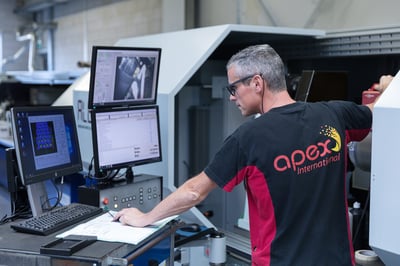 CMYK process printing is dependent on delivering an accurate ink laydown of color percentages to reach the Pantone color requested. Anilox quality and standardization are vital to controlling the density of each color and are key components that will make or break your process print goals. But of course, you can’t control what you can’t measure.
CMYK process printing is dependent on delivering an accurate ink laydown of color percentages to reach the Pantone color requested. Anilox quality and standardization are vital to controlling the density of each color and are key components that will make or break your process print goals. But of course, you can’t control what you can’t measure.
Accurate anilox QC measurements can pave the way for successful CG CMYK and, therefore ECG CMYK+OGV, printing. Anilox quality control measures the integrity of each cell, helping operators choose the best anilox rolls and sleeves for production. Inaccurate measurements can lead to massive downtime and waste, so its important to control the anilox quality to control print quality.
In spot color printing, the ink color is premixed and is more forgiving in the print process, except for the waste it may cause. In process color printing, the amount of ink transfer will greatly impact the final image colors. For example, to achieve a Heineken green color, in spot color printing the ink will be pre-mixed in the ink lab using their Pantone color code and applied on press – too much or too little 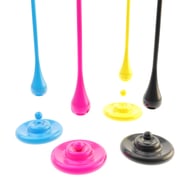 will not greatly impact the pigment of the ink. On the contrary, in the CMYK process, the Heineken brand green may require the following levels of ink opacity: C: 100% M: 0% Y:100% K: 24%. If your yellow color station has an anilox that is transferring poorly, you may end up with a Christmas green color and a not-so-jolly rejection from the brand. So, in order to truly achieve the ink savings, process efficiency, uptime, and profitability of ECG, you must set the foundation for anilox quality and ink laydown consistency. Evaluate and optimize your ink delivery systems, doctor blades, anilox engravings, printing plates, cylinders, pressure gauges and other variables to find the optimal process for CMYK printing.
will not greatly impact the pigment of the ink. On the contrary, in the CMYK process, the Heineken brand green may require the following levels of ink opacity: C: 100% M: 0% Y:100% K: 24%. If your yellow color station has an anilox that is transferring poorly, you may end up with a Christmas green color and a not-so-jolly rejection from the brand. So, in order to truly achieve the ink savings, process efficiency, uptime, and profitability of ECG, you must set the foundation for anilox quality and ink laydown consistency. Evaluate and optimize your ink delivery systems, doctor blades, anilox engravings, printing plates, cylinders, pressure gauges and other variables to find the optimal process for CMYK printing.
Once you’ve mastered this 4-color process, you’re ready to extend your color gamut into orange, green, and violet or blue, with precision and profitability. Sure, at the four-color level, you will see cost savings and efficiency, but once you get to the extended gamut level, a whole new world of profitability begins.
Unlocking Profitability in ECG
There’s no doubt that extended color gamut is a more efficient and cost-effective alternative to spot color printing. By using process colors instead of pre-mixing ink in a lab, printers can save tremendously by reducing ink waste, unplanned downtime, makeready, and troubleshooting. Instead of running your press at maybe 35-45% capacity, a converter running extended color gamut can keep the press running up to 75% of production time! With presses running at top speeds for an extended period, the runability and longevity of your ink, substrate, plates and aniloxes hold a higher value than before. Without speed and efficiency, ECG printing would completely lose its luster – there would be no point!
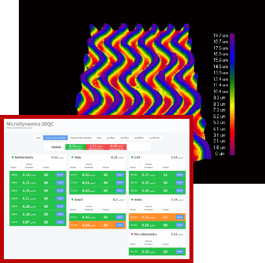 Finding quality consumables requires conducting quality assessments. Regarding the anilox, Apex’s GTT open channel engraving has undergone continuous improvement in channel uniformity and volume consistency for over 10 years. The new GTT 2.0 engraving has been certified for volume consistency, extended roll life, and print quality assurance through audits with the 2023 FTA award-winning Veritas anilox inspection system. Patented in 2013, the open slalom channel geometry of GTT reduces liquid turbulence allowing for smoother ink transfer, easier cleaning, maximum ink mileage, and ultimate anilox efficiency. The secret to the GTT 2.0 innovation is the 50% reduction in cell wall surface area across the anilox, as well as the decrease in the required channel depth by an average of 25%. Over recent years, this open path geometry has proven its value, causing many anilox suppliers to create their own geometries with various levels of cell wall reduction. But only the patented GTT 2.0 from Apex International has the unhindered wave-like channels proven to optimize ink usage, resist damage and defects, and perform on a wide variety of substrates. To unlock true profitability in extended gamut, choose an anilox solution that is certified for volume uniformity and innovated for ultimate savings and performance.
Finding quality consumables requires conducting quality assessments. Regarding the anilox, Apex’s GTT open channel engraving has undergone continuous improvement in channel uniformity and volume consistency for over 10 years. The new GTT 2.0 engraving has been certified for volume consistency, extended roll life, and print quality assurance through audits with the 2023 FTA award-winning Veritas anilox inspection system. Patented in 2013, the open slalom channel geometry of GTT reduces liquid turbulence allowing for smoother ink transfer, easier cleaning, maximum ink mileage, and ultimate anilox efficiency. The secret to the GTT 2.0 innovation is the 50% reduction in cell wall surface area across the anilox, as well as the decrease in the required channel depth by an average of 25%. Over recent years, this open path geometry has proven its value, causing many anilox suppliers to create their own geometries with various levels of cell wall reduction. But only the patented GTT 2.0 from Apex International has the unhindered wave-like channels proven to optimize ink usage, resist damage and defects, and perform on a wide variety of substrates. To unlock true profitability in extended gamut, choose an anilox solution that is certified for volume uniformity and innovated for ultimate savings and performance.
Not only can you maintain print quality and improve the efficiency of your production facility, with GTT engravings you can reduce your anilox inventory too. Yes, you heard that right – standardize and consolidate aniloxes so you can buy less and save more. With GTT 2.0, anilox choice is based on channel width and volume. Following the initially launched series of XS, S, M, L , & XL options, GTT 2.0 has increased its volume options to 21 variations all based on the same mathematical opening to depth optimum ratios. This increased offering is NOT to move back to an excessive anilox inventory – the new options now enable a printer to choose a dedicated set of GTT 2.0 anilox rolls or sleeves to meet your needs in color density based on your ink, tape, plate supplier or whatever substrate is being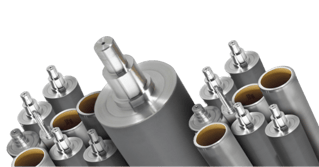 printed on. The open channel transfers a wide variety of liquid inks, smoothly and precisely, and can be used on a wide variety of applications. Choosing the right anilox, maintaining anilox quality and extending roll life is vital to maintaining profitable ECG printing. Speak with your Apex International representative to discuss how you can optimize for ECG quality and productivity, and also consolidate your anilox inventory, with GTT engravings.
printed on. The open channel transfers a wide variety of liquid inks, smoothly and precisely, and can be used on a wide variety of applications. Choosing the right anilox, maintaining anilox quality and extending roll life is vital to maintaining profitable ECG printing. Speak with your Apex International representative to discuss how you can optimize for ECG quality and productivity, and also consolidate your anilox inventory, with GTT engravings.
With a lean, standardized approach to anilox asset management, print process control, and product quality you can get started in the quest for an improved production output, with ECG. Unlock profitability, with little outside investment, by doubling down on your ECG savings, print quality, press performance and competitive edge with GTT 2.0 anilox rolls. Though you may have given CMYK-OGV printing a chance in the past, and maybe you tried the first edition GTT anilox as well, we encourage you to try again. Technology improves, enhancements are made and customer experience changes. Don’t let history or hearsay dictate your future and stop you from taking steps towards an application that will help you save thousands and remain competitive against digital.
To learn more about the GTT open slalom ink channel geometry and for tailored anilox solutions, contact the anilox experts at Apex International today: https://apexinternational.com/contact-us/.
This was originally published in FLEXO magazine in June 2023.
